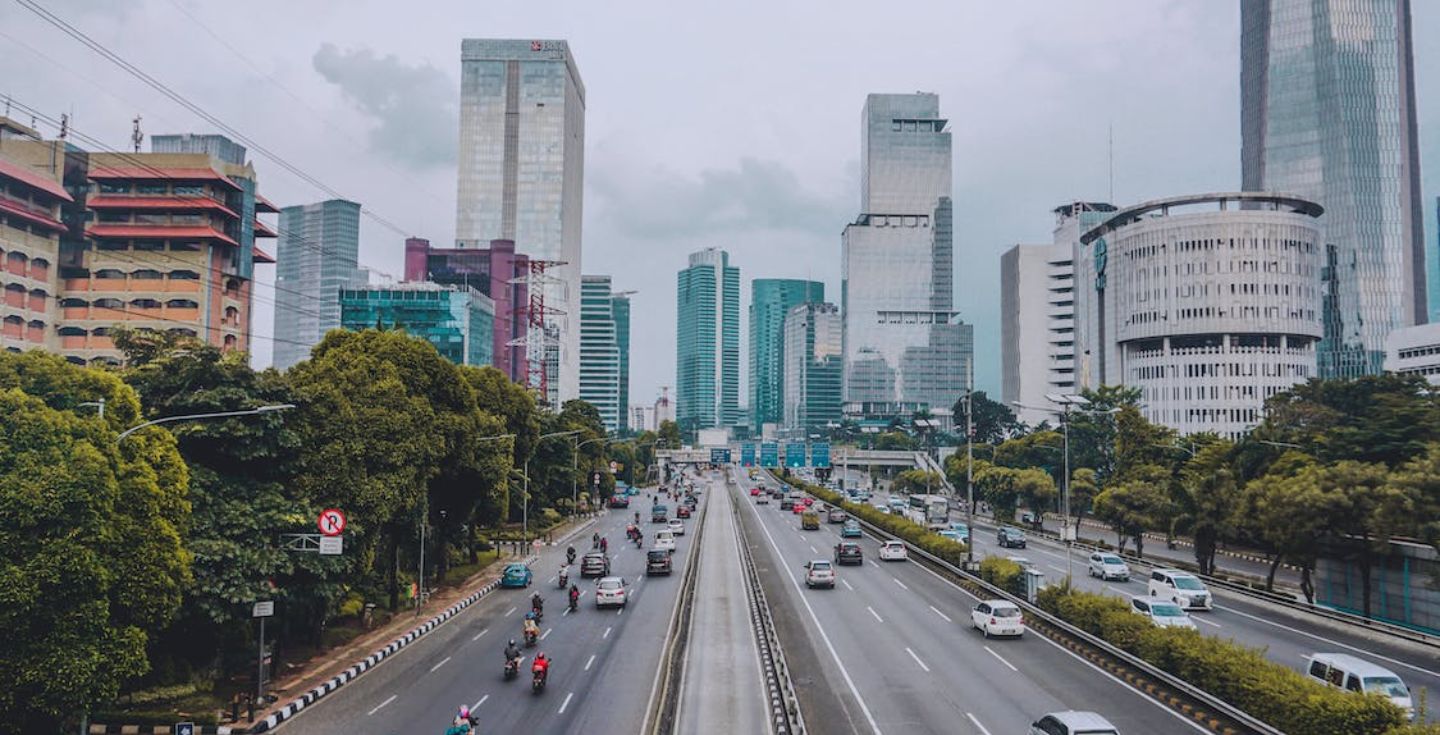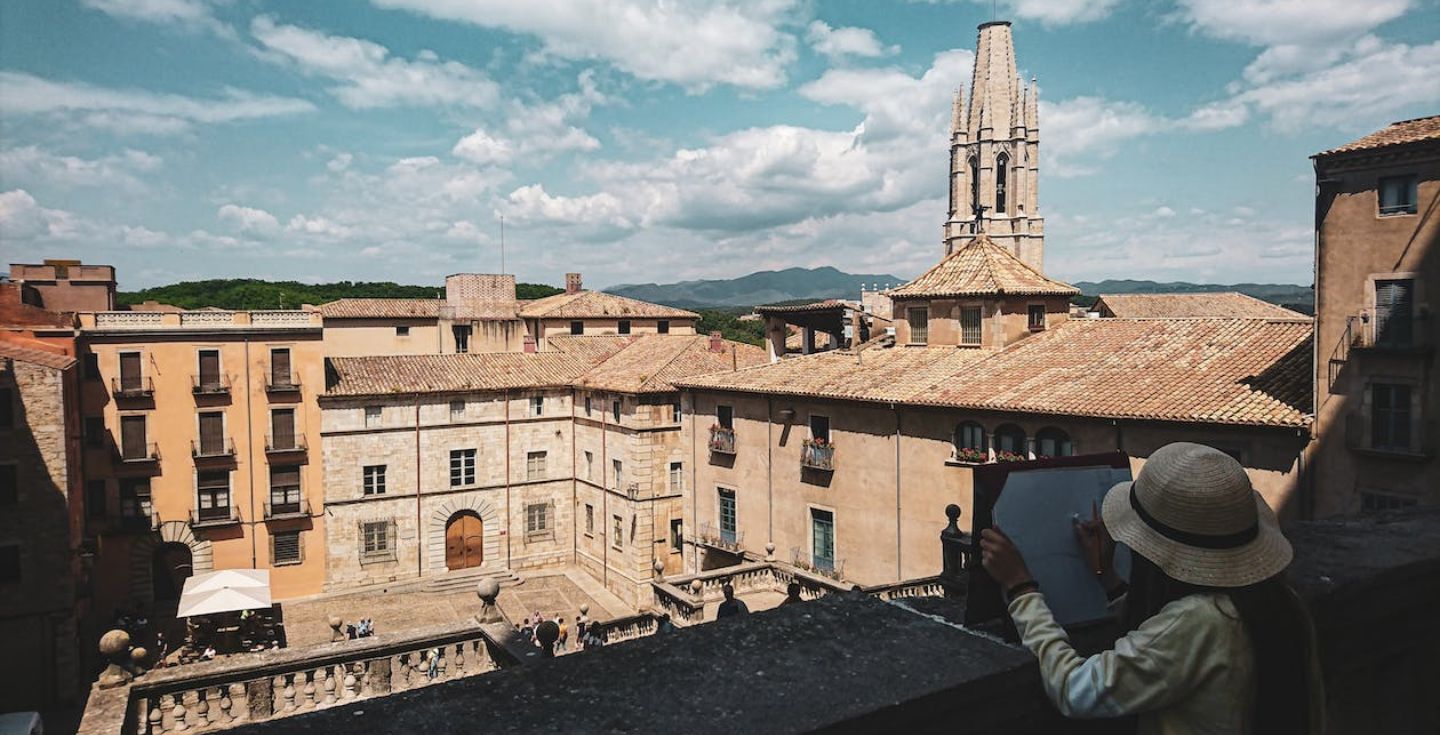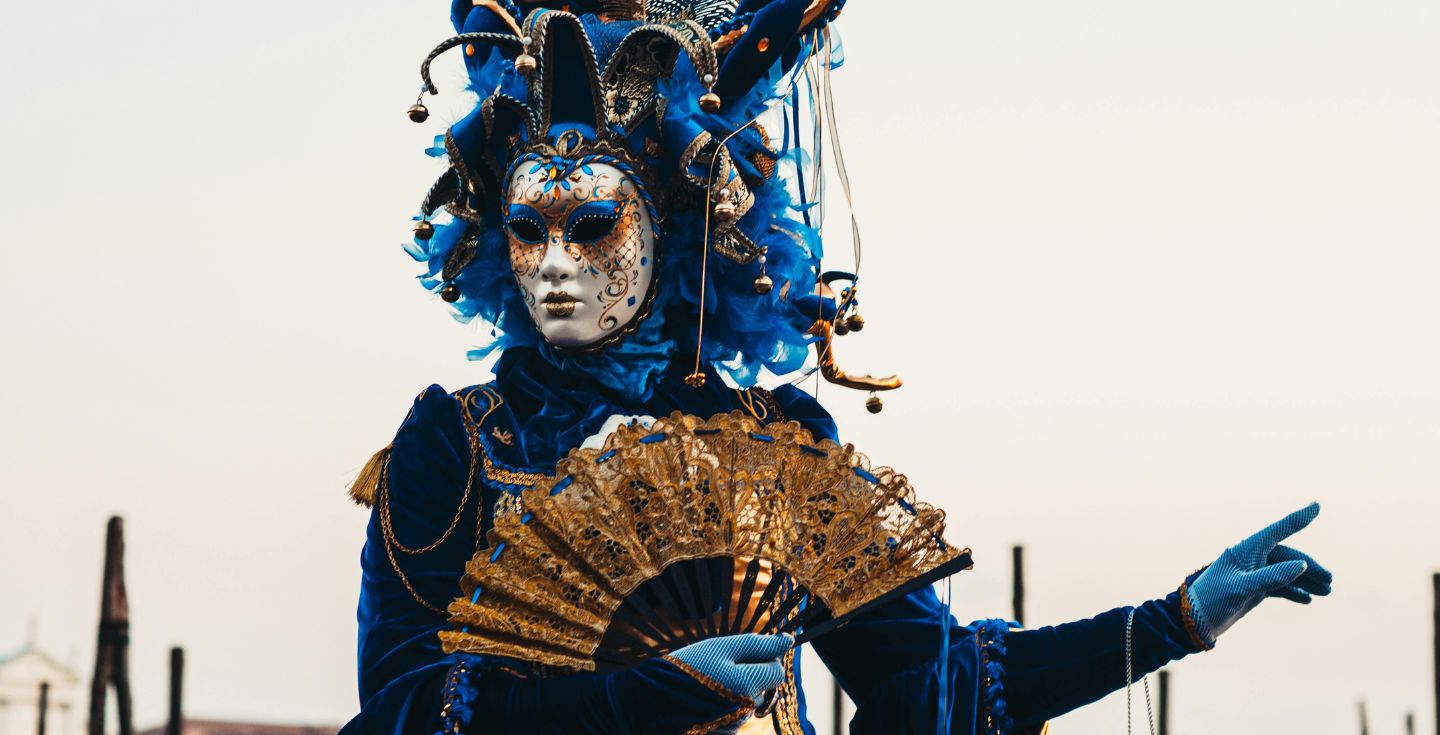Best time to visit Bali
Planning your trip to Bali? Follow along for all the details on the best time to visit and the activities to take on during your time there.
Bali is a tropical paradise that draws visitors from all over the world. A quick scroll through endless social media posts from the island can make you think that it offers sunny weather and perfect conditions all year round.
However, not all seasons are equally as good for visiting Bali. Follow along to find the best times to be on the island depending on what you want to do and see during your visit.
What’s the best time to visit Bali?
The dry season in Bali lasts from May to October, and it’s the most popular time for visiting the island. During this time, the warm weather is accompanied by clear blue skies and pleasant breezes.
That said, Bali barely cools down during the wet season, with average temperatures ranging around 80-90 °F (27-32 °C) all year round. The wet season does bring more rain and stronger winds, but is still a good time to visit Bali if you want to avoid the crowds.
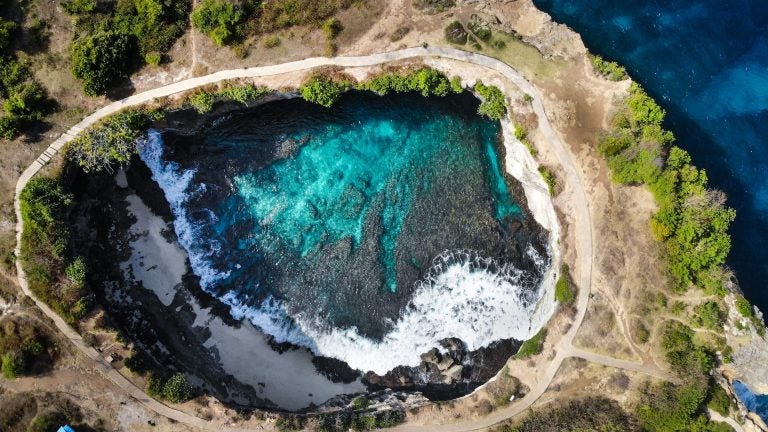
Visiting Bali in the dry season or peak season
Southeast Asia is often considered a great winter getaway because the dry season runs from November to March. However, that’s not the case in Bali.
Bali’s dry season runs from May to October, and it’s the perfect time to visit if you want to relax on the beach, try water activities like surfing or snorkeling, or simply bask in the sun. July and August tend to offer the best weather, less humidity, and plenty of activities and events.
However, it’s also when the island is most crowded and the prices are highest. You can visit in May, June or September to enjoy similar weather, yet have a bit of an easier time with accommodation and prices for most things on the island. Here’s a quick rundown of what you can expect during each month here:
- July and August are high-season months to visit Bali, as the weather is at its best with hot, sunny days and low humidity. However, it is also the most crowded and expensive time to visit. Accommodation prices can double or triple, and popular attractions can be packed.
- May, June and September are shoulder seasons in Bali, meaning the crowds are smaller and the prices are lower. The weather is still good, with plenty of sunshine and occasional showers.
- October is the start of the rainy season in Bali, but it is still an excellent time to visit if you don’t mind the occasional downpour. The prices are lower, and the crowds are smaller than in the summer months.
How to prepare for a visit during the peak season
Despite the crowds and higher prices, Bali is still a beautiful and magical place to visit in peak season. If you are willing to do a little planning and be flexible, you can have a wonderful time. Some recommendations that you can take into account are:
- Book accommodation early. This will help you avoid overpaying for your stay and still have plenty of options to choose from.
- Be prepared for crowds. Famous attractions can be very crowded, especially during the summer months.
- Expect higher prices. Food, activity, and hotel prices all tend to be more expensive in the dry season.
- Be patient. Traffic can be heavy, especially in the popular tourist areas.
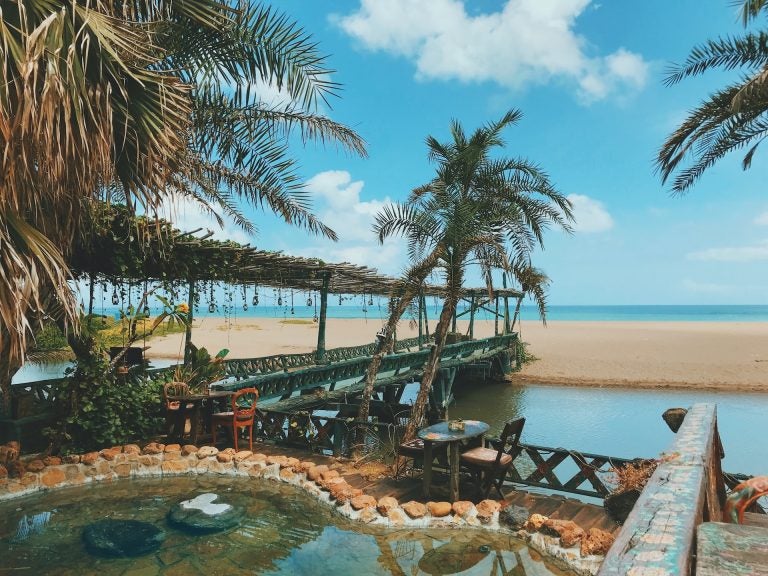
Visiting Bali in the rainy season or low season
The rainy season in Bali runs from November to March and shows the other side of the island’s tropical climate. The weather is still warm and humid, though there’s more rain and wind than in the dry season. However, the rain usually comes in short bursts, and there are still plenty of sunny days to enjoy the beaches and other outdoor activities.
Of course, traveling in the low season has some benefits. If you don’t mind some rain and wind in the Bali’s wet season, you can enjoy:
- Lower prices and best deals: Accommodation, food, and activities are significantly cheaper. You can save up to 50% on your trip by visiting during this time.
- Avoid crowds: The beaches, temples, and other attractions are much less crowded. You’ll have more space to relax and enjoy yourself.
- Greener scenery: The rain during the low season makes Bali even more lush and green.
Outside of the few days when it’s pouring non-stop, the low season can be a good time to do some exploring and hiking in the island. It’s the best time to visit Bali’s iconic rice paddies, and you can explore a monkey forest or take on mountain hikes as long as you pack right for Bali and have appropriate clothing with you.
How to prepare for a visit during the low season
The rainy season can be just as enjoyable if you prepare for your trip and know what to expect both from the weather and the businesses.
- Be prepared for rain: You will likely experience rain during your trip, so pack an umbrella and raincoat.
- Some activities may be limited: Some water sports, such as diving and surfing, may be limited due to the weather conditions.
- Some businesses may have limited hours: Some restaurants and shops may have limited hours or close altogether during the low season.
In short, traveling this season may not allow you to enjoy the beaches in all their splendor, but the island will be much less crowded and you’ll have a great time visiting its natural and cultural attractions.

When are the top festivities in Bali?
Bali has a rich culture and plenty of festivals, which can be the main reason some tourists visit the island. Here are some of the main celebrations you might want to visit during your stay:
- Bali Kites Festival is an annual kite festival held in July in Padang Galak area, Sanur Beach, Bali. It is one of Indonesia’s most popular and colorful festivals, attracting thousands of visitors worldwide.
- Bali Arts Festival is a month-long celebration of Balinese culture held every year in mid-June or mid-July. The festival features various traditional music, dance, art performances, workshops, exhibitions, and demonstrations.
- Nusa Dua festival is an annual event held in October. It celebrates Balinese culture and arts and features a variety of events.
- Indonesian Independence Day is celebrated on the 17th of August. On this day, Indonesia commemorates the proclamation of independence from Dutch colonial rule in 1945. It is a national holiday marked by nationwide flag-raising ceremonies, parades, and cultural performances.
- Nyepi is the Balinese New Year, a day of silence that usually takes place in March or April. On Nyepi, all activity on the island comes to a standstill. No traffic, shops are closed, and no lights are turned on. This is a time for reflection and introspection and offers a unique experience if you’ve never taken part.
- Galungan is a short festival that usually falls in March or April and celebrates the victory of good over evil. Elaborate offerings, traditional dances, and special ceremonies mark the celebration.
- Kuningan is the final day of the Galungan festival, which usually takes place in April or May. It is a time to give thanks to the gods and ancestors. Special prayers and offerings mark the festival.
- Odalan is a festival that is celebrated at temples all over Bali. It features elaborate decorations, traditional dances, and special ceremonies. The date varies from temple to temple.
- Ubud food festival is a three day celebration for foodies featuring both local and international foods by accomplished chefs that typically takes place in May or June.
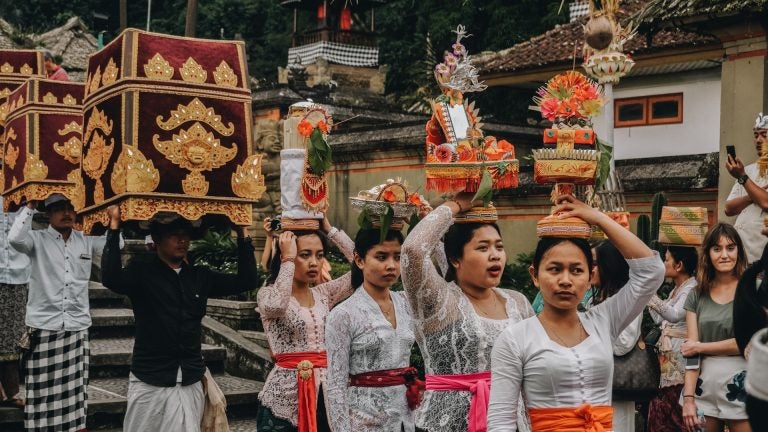
When to visit Bali’s popular places and hidden gems
Still not sure when you want to visit or what you want to do when you arrive? Let’s take a look at some of the top things to do in Bali and when is the best time to be there.
Seminyak
Best time to visit: Dry season, from March to October
Known for its upscale resorts, vibrant nightlife, and trendy beach clubs, Seminyak offers a perfect blend of relaxation and entertainment. It shows its best colors in the dry season because it’s high time to visit the golden beaches, indulge in spa treatments, hit the waves, and explore chic boutiques and stylish restaurants.
Ubud
Best time to visit: All year round, with the food festival being held in May or June
Ubud is Bali’s cultural hub and a paradise for art enthusiasts and home to the aforementioned Ubud food festival. Immerse yourself in the lush greenery and serene atmosphere as you visit traditional markets, attend local art workshops, and explore the famous Monkey Forest.
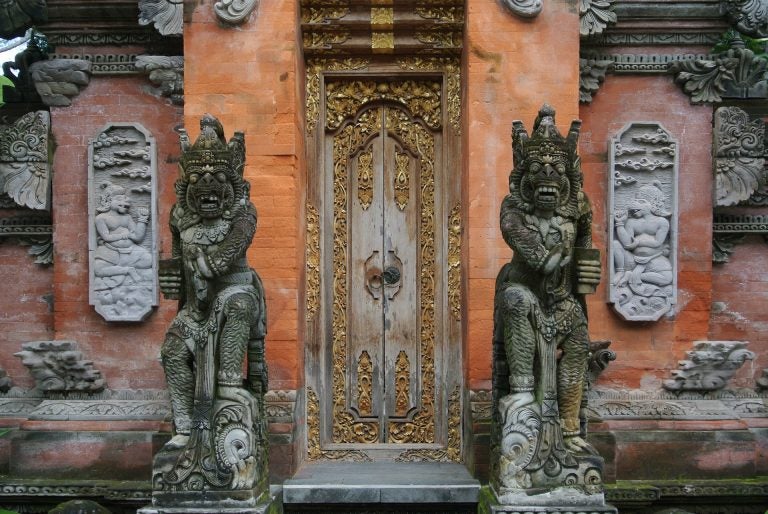
Nusa Dua
Best time to visit: Dry season, from March to October
Nusa Dua is renowned for its pristine white sandy beaches and luxurious resorts. It’s an excellent spot for water sports such as snorkeling, diving, and parasailing, which also means it’s most popular in the dry season. Explore the underwater world at Nusa Dua’s vibrant coral reefs, or simply relax in the crystal-clear waters.
Tanah Lot
Best time to visit: All year round for sightseeing, March to October for staying at the beach.
Perched on a rocky outcrop along the coastline, Tanah Lot is one of Bali’s most iconic and photogenic sites. Visit this ancient sea temple during the low tide and witness a breathtaking sunset backdrop, creating a truly magical experience.
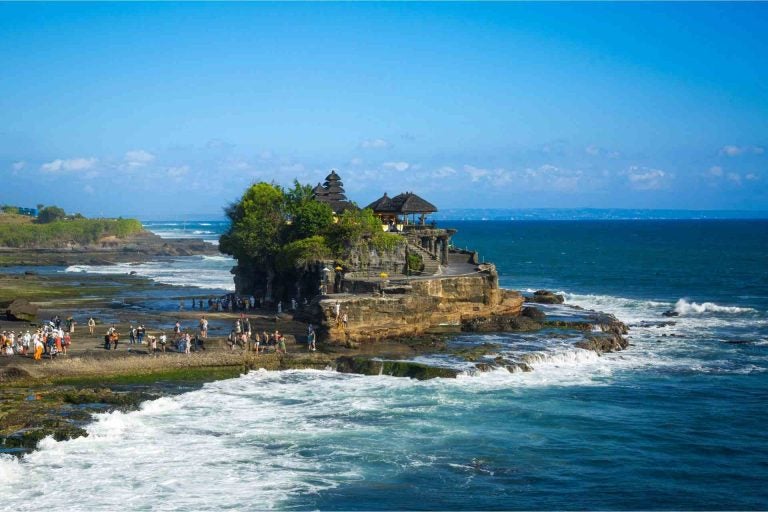
Safety tips
It’s easy to lose consciousness and just get immersed in Bali’s weather, food, culture, and landscapes. However, there are some safety tips you might want to consider for the best Bali experience possible:
- Stay hydrated. The hot and humid weather drains fluids quickly, make sure to drink plenty of water and stay hydrated during your stay.
- Avoid tap water. Tap water in Bali can be contaminated and isn’t recommended for cooking or drinking, so make sure to stick to drinking bottled water.
- Use sunscreen. Heat and humidity also make it super easy for you to get sunburnt, even in the wet season when the sun breaks out, so make sure to wear sunscreen at all times.
- Get travel insurance. While no form of insurance is mandatory to enter the island, having travel and health insurance can help you save a lot of stress and money in case of an emergency.
- Keep your valuables close. The busy streets, especially during peak season, make it easier for thieves to target tourists. Keep your valuables close to you at all times, ideally in a zippered bag.
- Have mobile internet. Constant access to mobile internet in Bali prevents you from getting lost in the island, allows you to use translation apps to communicate with the locals, or get a drive home from an official taxi.
Stay connected in paradise
Using an eSIM is easily the best way to stay connected in Bali. It’s both cheaper and more convenient than other alternatives such as using a travel SIM card or renting out a pocket WiFi device. All you need is an eSIM-compatible device and internet connection to buy and set up your eSIM within minutes.
Holafly offers some of the best eSIM options for Bali with unlimited data, 24/7 customer support, and mobile apps that make the service super easy to use. The Holafly eSIM for Indonesia provides coverage in the entire country, including Bali, so you’ll never have to worry about losing connection at the worst time.





 Language
Language 


















 No results found
No results found




